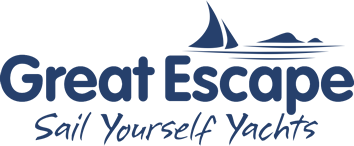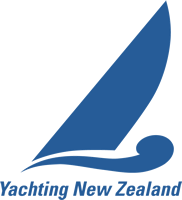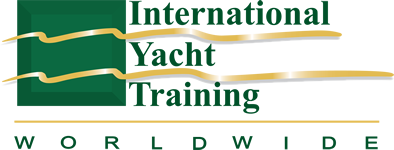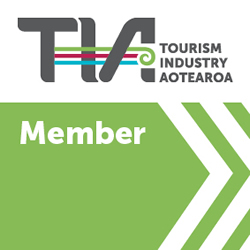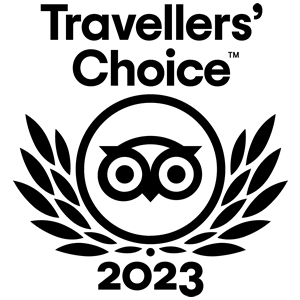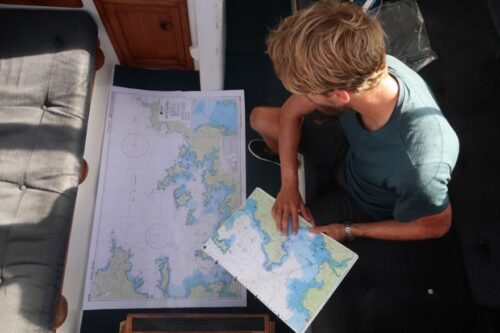 The most important aspects of navigation are to know –
The most important aspects of navigation are to know –
- Where are you?
- How far to your next destination?
- The safest way to get there?
- About how long it will take to get there?
The navigation skills you’ll need are Position Finding and Passage Planning
The tools you’ll need in rough order of importance are;
- A good set of eyes and the ability to recognise distant objects
- Relevant chart(s) and the ability to read them
- Boats compass
- Timepiece, e.g.Watch
- Method of estimating speed and distance
- Hand bearing compass
- Pencils, logbook, drawing compass and protractor
- A reliable GPS or chartplotter app., (once you know how to read a chart and plan a passage, electronic navigation can be a great aid to navigation).
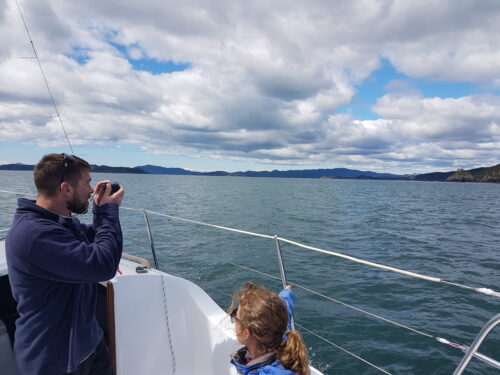 Position Finding
Position Finding
There are a number of ways you can find your position, when out sailing the easiest way is to look around and identify landmarks, bouys and beacons on your chart as you pass them. GPS/Chartplotter apps which you can download onto a smart device have also made it very easy, providing your battery doesn’t run flat at a crucial moment! No matter the power status aboard, during the day, you should always be able to find out where you are using your eyes, a compass and a chart. This article by Ben Meakan’s is a excellent summary of some easy position finding options Click for Pilotage: 14 ways to get a fix – Practical Boat Owner
Passage Planning
If you’re like Alice in Wonderland and you don’t much care where you go, you could just sail around aimlessley (but I hope you have a good position fix so you avoid dangers!) Most of us have a destination in mind, an anchorage we want to visit or a island to circumnavigate, so we need a plan. The complexity of your plan will depend on the complexity of the planned voyage and there are numerous articles and training videos on the web on this topic. Each plan will have four key elements;
- Appraising all relevant information
- Planning the intended voyage
- Executing the plan taking account of prevailing conditions
- Monitoring the vessel’s progress against the plan continuously.
The IYT eLearning for the International Bareboat Skipper Certification, Module 19 covers charts, chartwork and Basic Navigation Click for IYT eLearning courses
Both Position Finding and Passage Planning are covered in our learn to sail adventure courses Click here for sailing courses, availability, pricing and booking
